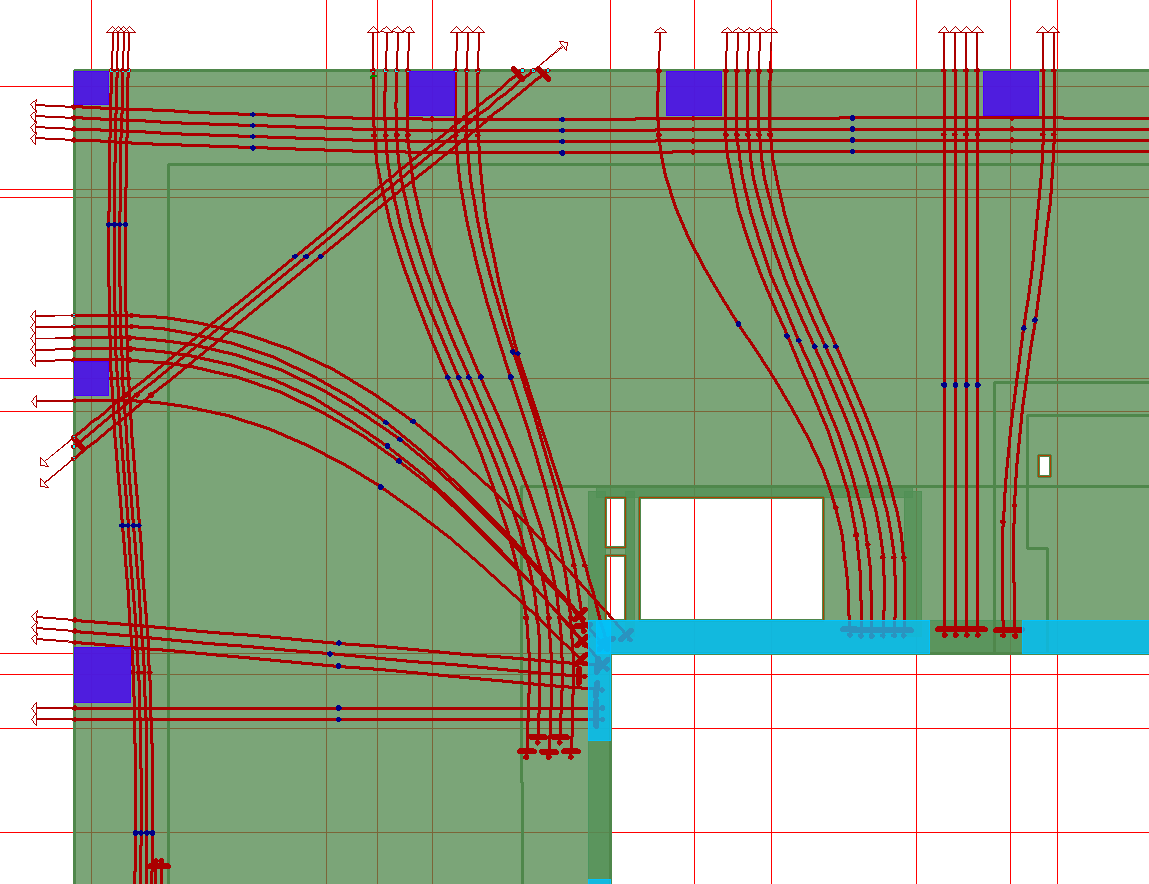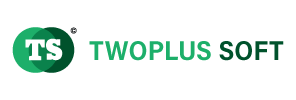สอบถามข้อมูลเพิ่มเติมได้ที่
![]() บุษราภรณ์ ศรีสาผา (นก)
บุษราภรณ์ ศรีสาผา (นก)
0863072164
025137494 ต่อ 105
https://www.facebook.com/nok.twoplussoft
***กรุณาระบุชื่อ software ที่ต้องการติดต่อด้วยครับ
ADAPT Floor Pro 2018
โปรแกรมวิเคราะห์และออกแบบพื้นคอนกรีตอัดแรง (Post Tensioning) และคอนกรีตเสริมเหล็กแบบ 3 มิติ ซึ่งพัฒนาโปรแกรมโดย Prof. Dr. Bijan O. Aalami , USA. มากว่า 30 ปีจากประเทศสหรัฐอเมริกา ปัจจุบัน ADAPT Floor Pro เป็นโปรแกรมยอดนิยมใช้กันแพร่หลายทั่วโลก กว่า 100 ประเทศรวมจนถึงประเทศไทย สำหรับบริษัทพื้นคอนกรีตอัดแรง และวิศวกรออกแบบโครงสร้างอาคารสูง อาคารขนาดใหญ่โดยเฉพาะ
ADAPT Floor Pro เป็นโปรแกรมที่ใช้กันวิเคราะห์ด้วยวิธี Finite Element Method เป็นโปรแกรมทำงานได้เดี่ยวๆ ในการออกแบบพื้นอาคารทีละชั้น และยังสามารถทำงานร่วมกับโปรแกรม ADAPT Builder ในการโมเดลอาคาร 3 มิติทั้งหลัง เพื่อที่จะสามารถโมเดลอาคารสูงได้ง่าย และทำงานร่วมกับโปรแกรม ADAPT EDGE และ ADAPT MAT ในโปรแกรมตระกูล ADAPT และ ยังสามารถทำงานร่วมกับโปรแกรมที่รองรับระบบ BIM (Building Information Modeling) อื่นๆได้ เช่นโปรแกรม Revit ที่สถาปนิกขึ้นโมเดลอาคาร 3 มิติไว้แล้ว ทำให้วิศวกรโครงสร้างนำมาใช้งานต่อได้เลย โดยไม่ต้องเสียเวลามาขึ้นโมเดลอาคารใหม่อีกรอบ โปรแกรมยังสามารถทำงานร่วมกับโปรแกรมวิเคราะห์ออกแบบโครงสร้างทั่วไปได้ เช่น ETABS,TEKLA เป็นต้
Applications
- Flat slabs (commercial, residential, hotel, healthcare)
- One-way beam and slabs (parking structures)
- Waffle slabs
- Investigation & repair of existing concrete slab systems
- Modal vibration analysis of concrete floor systems
- Beam and slab systems
- Podium slabs
- Transfer slabs
ADAPT Website
ADAPTsupport
ADAPTsupport



Features
Structural Modeling
- Generates a true 3D solid physical model of an entire floor system or complete concrete building
- No simplification of geometry or manual creation of analytic model required
- Uses smart components to assemble an entire floor system: slab regions, walls, beams, columns, drop caps, drop panels, rebar, tendons and openings
- Models steps above and below the slab as well as any type of slab depression
- Define standard concrete sections or generic steel members - Streamline modeling process by importing DWG/DXF files and intelligently converting to structural components
- One-click switches between single- and multi-level modeling modes
- Define multiple stiffness profiles for your model, e.g., uncracked for gravity and cracked for global lateral analysis
- Coordinated multi-level modeling saves time and reduces errors
- All slab models for a project can be in one model file
- Flexible definition of component releases and boundary conditions
- Handles complex models with ease and accuracy
- Models can be supported on columns, walls, point supports, line supports, or any configuration of springs (point, line or area representing soil)
- View and examine 3D rendered solid model to verify the accuracy of the structure's representation
- Apply loads of any configuration, anywhere on the slab
- Supports live load patterning and automatically reduced live loads, where applicable
- Define gradient or uniform temperature loading
- Subject model to shrinkage strain
- Can model internal lateral load reactions imported from ETABS
- When used with Edge, analyzes structure for any applied building lateral loads including wind and seismic forces
- algorithm automatically breaks down any concrete floor system into tributary regions (US Patent No.: 9,471,720)
- Automatically detects discontinuities in columns and walls and transfers loads down to foundation
- Calculated tributary-area based load takedown
- Use tributary loads to design columns, transfer slabs or beams
- Graphically compare tributary loads against FEM results - excellent method to check your models
- Uses integrated tendon modeling as opposed to "balanced loading". This overcomes many of the approximations and shortcomings inherent in the conventional modeling of post-tensioning. Ask ADAPT to email you a technical note on its modeling approach [Aalami, Bijan, O "Structural Modeling of Post-Tensioned Members." American Society of Civil Engineers, Structural Journal, February 2000, pp. 157-162]
- Model bonded or unbonded tendons
- Layout tendons using straight or spline span segments
- Swerve tendons around openings while maintaining vertical curvature
- Design using effective force or specify stressing ends and friction loss parameters
- Calculates prestressing force in members as well as secondary restraining effects (hyperstatic moments) due to prestressing
- Tendon generation wizards for banded and distributed tendons
- Automatically or manually model and dynamically edit tendons in plan or elevation view online video ...
- Tendon curvature check against a minimum horizontal and vertical radius of curvature
- Automated tendon clash detection
- Program calculates and graphically shows force along tendon
- Industry leading automated 3D finite element meshing algorithm
- Performs a detailed finite element analysis of the entire floor systems and its supporting structure using shell and frame elements
- Unlike other slab programs in the market that are dressed up 2D plate software, ADAPT-Floor Pro is based on a true 3D finite element model
- Smart components automatically establish required FEM connectivity, eliminating need for manual fine-tuning of analysis model
- Calculates cracked section deflections
- Carries out integrated modal vibration analysis on complete model or any user-defined sub-region
- When used with Edge, multi-story building models generated in Floor Pro can be analyzed for gravity and lateral loads
Design and Automatic Code Checks
- Easily define support lines - even for complex geometries
-Support line wizard
- Automatically generates all critical design sections
- Column strip / middle strip option
- Performs code check and reports the location and amount of reinforcement needed for entire floor system
- Define arbitrary manual design sections - software calculates actions, required rebar and moment capacity
- Provides instant graphical design feedback in model by displaying:
- Stresses - top and bottom against code allowable values
- Design actions along support lines
- Average precompression
- Percent dead load balance
- Deflection along support line showing L/Def values per span
- Member forces - columns, beams and walls
- Allows user to design for specified crack width
- Shows calculated crack width contours on slab
- Wood-Armer design option
- Calculates punching shear stresses, performs checks, and specifies stirrup or stud rail reinforcement needed
- Designs and specifies one-way shear reinforcement for beams
- Reinforcement display per load combination, either along support lines or with user-defined orientation view online video ...
- Edit graphical rebar layout report to optimize rebar layout
- When used with Edge, automatically combines gravity analysis results carried out at slab level with lateral load solution obtained at building level
- Click here to see graphic of Floor Pro design process...
- Detailed quantity takeoff report
- Generates both professional and ready-to-submit graphical and tabular reports
- Exports all geometry, reinforcement and tendon information to DWG or DXF format
- Export rebar design as 3D model objects into Revit Structure
- Create column loading and design tables in XLS format
Licensing Options - Multi-user network or stand-alone versions
- Download with soft license or flexible USB dongle
Dynamic Rebar Design and Detailing (DRD)
- Model typical reinforcement as base reinforcement using either mesh rebar, single bars or distributed rebar
- Edit calculated reinforcement graphically using rebar libraries to optimize rebar layout
- Freeze your final rebar layout by converting it to base rebar
- Carry out strength investigations and generate demand/capacity curves for critical sections
- Each base reinforcement can have unique cover and material properties
- Perform friction and elongation calculation
- Manage and display tendon chair heights
- Calculate tendon quantities and generate tendon specific reports
- Click to view brochure and examples...
Codes
The program supports the following design codes:ACI-318 (1999, 2005, 2008, 2011 and 2014)- IBC [International Building Code] (2006, 2009, 2012 and 2015)
- British-BS8110 (1997)
- Canadian-A23.3 (1994)
- Canadian-A23.3 (2004)
- Canadian-A23.3 (2014)
- Australian-AS3600 (2009)
- Brazilian-NBR6118 (2014)
- Indian IS456 (2005 reprint)
- European EC2 (2004)
- Hong Kong-CoP (2013)
- Chinese-GB50010 (2002)
- Singapore SS EN 1992-1-1/NA:2008-06 Annex to EC2
Integration
- The program integrates with the following third party programs and file formats:Autodesk® REVIT® Structure 2015 - 2019: 1:1 bi-directional integration with physical model including loads, reinforcement can be imported back into REVIT®
- ETABS: import geometry lateral and gravity loads including load cases more information ...
- Import and export of DWG/DXF files
Units
- The program supports the following units:
- SI
- MKS
- American Customary
Hardware Requirements
- 64 bit PC running windows 7, 8 or 10
- Minimum of 4 GB RAM
- Available hard drive space of 1 GB
- Mat (Raft) Foundation Design
- To model and design soil or pile supported foundation mat (raft) foundation systems, use ADAPT-MAT. All the modeling and intelligent features availabe in Floor Pro are also available in MAT.
- Design of Ground Supported Slabs (SOG) on Expansive Soil
- To model and design post-tensioned slab-on-grade projects on expansive soils, use ADAPT-SOG. It offers a 3D finite element modeling approach for slabs supported by soil and subject to applied ym displacements.
Link with ADAPT-PT and ADAPT-RC
The structural model generated can be used with no modification to run either on ADAPT-PT, or ADAPT-RC, both of which are based on Equivalent Frame Method. Conversely, the User can first design the floor system using ADAPT-PT, determine the optimum force, profile and location of the post-tensioning. and then within the same model run the ADAPT-Builder-Floor Finite Element Analysis. The procedure is detailed in a PTI publication [Aalami, Kelly, "Design of Concrete Floors with Particular Reference to Post-Tensioning,
|


